Precision cutting is an essential aspect of the ever-changing landscape of manufacturing and materials processing. Nevertheless, traditional methods, though effective in their day, were frequently limited by accuracy, material compatibility, and productivity. This is where innovative technologies like laser and waterjet cutting come into play. Both have brought forth extraordinary advances on their own parts. Laser cutting is widely known for its precision and capability to deal with complex designs; it offers incomparable accuracy and sharp edges.
Conversely, waterjet cutting has wider applications and can cut through almost any material without changing its thermal properties making it useful in unique ways which cannot be duplicated by other methods such as laser beam machining. In this article, I will discuss the new trend in combining laser beams’ cutting abilities with water jet’s ability to cut any kind of material without distorting its thermal properties thereby creating a hybrid technology that combines advantages from both sides. Here you will see how it applies to materials shaping processes while increasing efficiency as well as using different techniques for improving precision during machining operations namely lasering or water-jet machining.
What Is Laser Waterjet Technology and How Does It Work?
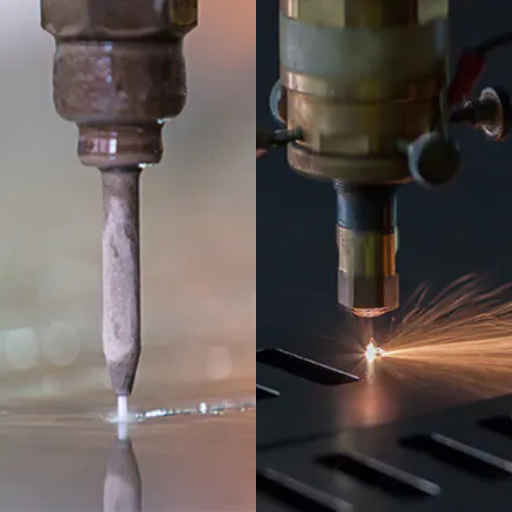
Image source: https://www.sculpteo.com/
Laser waterjet technology is the hybrid cutting process that combines the accuracy of laser cutting with the flexibility of waterjet cutting. In this way, a laser creates initial penetration and fine patterns whereas a water jet comes to finish off the cut by cooling the material and protecting it from losing its shape due to heat distortion. Consequently, many materials can be cut with high precision using this method such as metals, ceramics or composites and textiles but without producing a lot of heat. This in turn increases cutting speeds reduces raw material wastage and improves general efficiency hence it becomes a viable tool for modern manufacturing challenges.
Understanding Laser Cutting
Laser cutting is a technique that employs a highly focused laser beam to cut materials very precisely. The procedure consists of focusing a laser into material while causing it to either melt, burn, vaporize away or be blown away by gas leaving behind an edge with high quality cuts. It is widely used in metals as well as plastics, woods among others where intricate designs are required. A few advantages include fine detailing, low wastage on raw materials and easy cuts which do not require additional post-production activities. Laser cutting is also considered fast and efficient thus making it applicable in various sectors like arts or manufacturing industries.
Principles of Waterjet Cutting
A high pressure stream of waterjets at times mixed with abrasives particles is used to cut wide range of materials. This technique works by speeding up the velocity of the water to supersonic speed creating a very powerful jet capable of cutting even metals, ceramics as well as composites which are extremely hard substances. Unlike other cutting methods, waterjet cutting is done at room temperature thus no heat affected zones or hardened edges since it uses cold media, such as liquid nitrogen or liquid helium. It is highly flexible and can cut very fine shapes having minimum kerf and practically no material wastage. Moreover, this process does not produce hazardous fumes or waste and the water used can be often recycled. Aerospace, automotive and engineering industries widely use this technology where precision and material integrity are important.
The Integration: Waterjet and Laser Cutting
A combination of the strengths of both methods can be achieved by integrating waterjet and laser cutting technologies, thus enhancing flexibility and precision. Waterjet cutting is well known for its ability to cut materials without generating heat, thereby preserving material properties and allowing for processing a wider range of substances, including heat-sensitive materials. Conversely, laser cutting produces unmatched details and speed, especially suitable for thin or intricate designs.
By using both technologies simultaneously, industries can take advantage of the cold-cutting precision of waterjets for thicker or more complicated materials as well as fine detail and quickness of lasers for delicate patterns or faster production requirements. This hybrid approach maximizes efficiency, minimizes waste, and supports various project needs with greater versatility. The complementary nature of waterjet and laser cutting eventually leads to improved outcomes across several sectors such as aerospace, automotive and manufacturing.
What Are the Key Benefits of Using Laser and Waterjet Cutting Services?
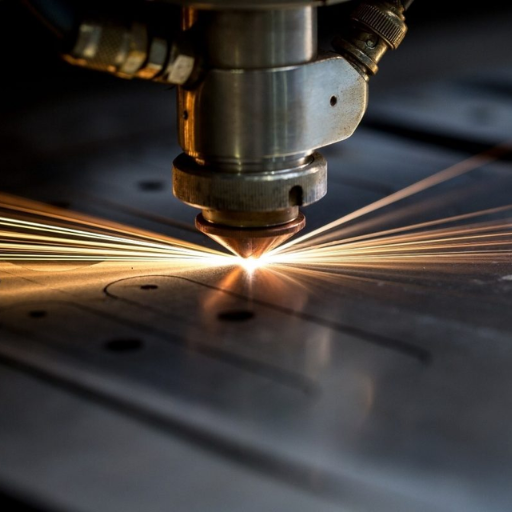
The main advantage of using these facilities is accuracy, flexibility and speed. When it comes to highly accurate or delicate designs that need very fine details done; laser cutting has no match as it is very fast and its precision levels are unmatched. Waterjet cutting on the other hand works best on thicker materials and those that are sensitive to heat because it does not produce heat thus maintains the integrity of the material. These two technologies have been used comprehensively in diverse cutting needs which minimized material wastages, and ensured quality end products. Also, both processes minimize toxic waste and allows for recycling of materials hence they environmentally friendly. Therefore together their application increases production, reduces overheads while meeting needs of industries demanding such as automotive manufacturing aerospace among others.
Unparalleled Precision in Cutting
Due to its advanced technological capabilities, laser and waterjet cutting services provide unprecedented precision of the cut. Focused beams of light in laser cutting can make precise cuts with highly detailed finishes even at the slightest shapes; this accuracy is especially demanded by industries such as aerospace and automotive. Waterjet complements this by allowing for exact cuts through thicker materials which are also heat-sensitive without within any deformations. The cold-cutting process applied in waterjets enables the materials to remain intact, hence leading to precise and cleaner cuts. Therefore, these procedures reduce wastage, maintain high quality assumptions while providing predictable results that are used across many fields.
Versatility of Materials
Cutting with laser and waterjet is an all-purpose method that can be used on different materials but each having its own characteristics. In particular, metals like aluminum, steel, titanium as well as non-metals such as wood, plastic and ceramics are very suitable for laser cutting. Laser settings can be fine-tuned to permit cutting of both thin sheets and thicker strong materials while still maintaining high levels of precision and edge quality.
On the contrary, waterjet cuts best when it comes to handling thick and brittle materials which might otherwise be sensitive to heat or prone to cracking when subjected to conventional cuttings. Such materials like stone, glass composites and even some types of metal benefit from abrasive waterjet machining process devoid of any heat generation consequently no alteration in material properties occurs. The versatile nature of both laser as well as waterjet technologies makes them applicable in various industries ranging from construction and manufacturing right through art designing thereby making them indispensable tools for modern fabrication needs.
Environmentally Friendly Cutting Solutions
For eco-friendly cutting, both laser and waterjet technologies have merits. Laser cuts, for example, are precise and efficient hence minimizing material wastage. Furthermore, this process is less power consuming compared to conventional cutting methods and generates fewer pollutants. Further still, a large number of advanced models of laser cutting systems have been designed such that they do not consume much energy.
Waterjet cutting is also environmentally friendly whereby it employs high-pressure water stream often mixed with garnet as an abrasive. This method does not produce any hazardous fumes or gases making it safe for the environment as well as the operators. Moreover, the fact that waterjets cut cold means that no heat affected zones are produced thereby retaining material integrity without resorting to other chemical treatments or finishes.
Incorporating these forms of cutting into industries leads to quality results while practicing environmental safety standards. Embracing such green technologies indicates a desire for sustainable practices without compromising on precision or efficiency.
How Does Laser Microjet Technology Enhance Cutting Precision?
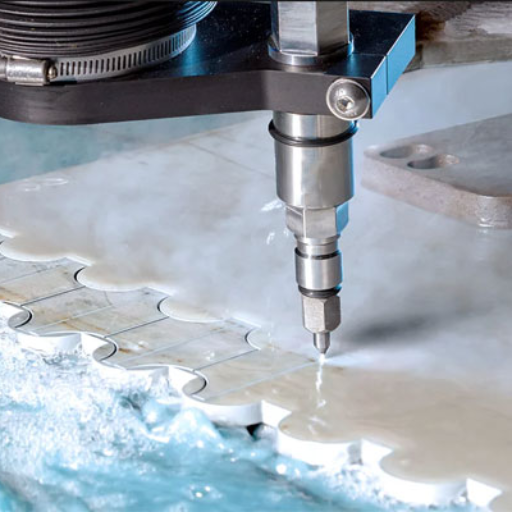
The precision of cutting is enhanced by Laser Microjet technology through the combination of laser cutting with a waterjet guiding the laser beam. This process presents a hybrid form where inside a low pressure water jet is found a laser cylindrical beam that behaves like an optical fiber. Consequently, this method creates narrower and more accurate cuts reducing edge roughness and thermal damage on materials used in manufacture. Furthermore, during cutting, the material is cooled by the water jet which prevents heat affected zones that results to cleaner and more precise cuts.
Innovations in Laser Microjet
Laser Microjet technology has been recently developed making it one of the best choices for precision cutting. The accuracy level associated with such types of cuts can be extremely fine as well as highly accurate such that they only suit delicate materials and intricate designs. Control systems have also improved their stability due to better alignment hence minimizing variations during cuttings. These variability reductions ensure consistency throughout all frequency ranges during that particular cut. Moreover, software integration improvements provide better control over cutting parameters that facilitates customization for specific material properties and thicknesses. The material waste reduction together with efficiency emphasizes on precision suits all levels of Laser Microjet technology innovations’ applications within industries like semiconductor manufacturing through medical device production.
Applications and Use Cases
- Semiconductor Manufacturing: In the semiconductor sector, Laser Microjet technology is widely used to cut silicon wafers and other delicate materials. This is because its precision and minimization of thermal damage play a vital role in safeguarding microelectronic components.
- Medical Device Production: The medical field takes advantage of Laser Microjet technology in making implants, surgical tools, and other complex medical devices. Therefore, medical device safety and efficacy are ensured by the use of this technology that delivers high precision and clean cuts.
-
Aerospace Industry: For aerospace applications, Laser Microjet is utilized for cutting titanium and advanced composites which are known to be strong. Utilizing this system is preferred as it ensures a higher degree of accuracy while at the same time reducing material wastage thus enabling production of intricate parts that comply with rigorous industry specifications.
What Should You Consider When Choosing Between Laser Cutting and Waterjet Cutting?
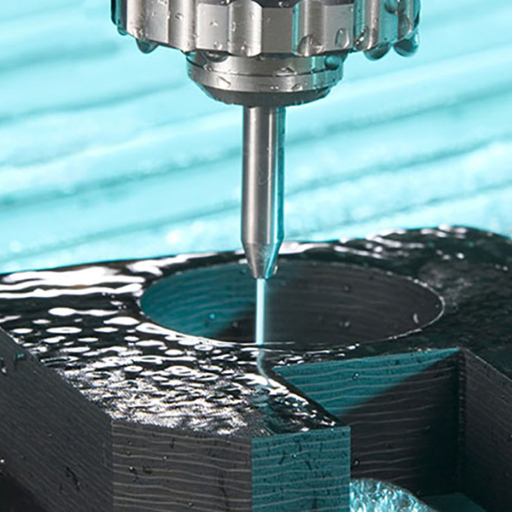
When opting for either laser cutting or waterjet cutting, there are certain things to keep in mind:
- Type and Thickness of Material: Laser cutting is suitable for thinner materials and metals such as those requiring high precision and speed. Conversely, it applies well with thicker materials including various kinds of metals, glass, stone and composites without heat affected zone.
- Cutting Accuracy: With its ability to cut at very accurate dimension, laser cutting is highly recommended for fine designs as well as narrow tolerances. Waterjet cutting too cuts precisely but cannot beat laser cutting when it comes to tiny details.
- Edge Finish: Laser cutting leaves clean sharp edges that require less finishing compared to other methods. On the other hand, waterjet is characterized by smooth edges which make it ideal for applications that demand unaltered material properties.
- Heat-Affected Zone (HAZ): Heat from the laser affects the material around the cut. In sharp contrast with laser cutting, waterjet does not produce any HAZ thereby keeping the integral qualities of a material intact.
- Rate and Efficiency: For thin materials, lasers generally process them quicker while jets might take longer but they can work safely on broader scope of materials and thicknesses without compromising their quality.
- Costs: This entails considering equipment costs as well as maintenance and operating expenses associated with each method chosen. So while laser might be more cost effective in terms of labor hours per part for large volume and extremely precise jobs; waterjets could be preferable for various applications in different kinds of materials.
Therefore, these factors should be evaluated in order to determine what type of tool would serve your needs best depending on the above mentioned parameters.
Material to Be Cut
In selecting between laser and waterjet cutting based on what needs to be cut, refer to the following checklist made from reputable sources.
- Metal: Metal works with both waterjet and laser cutting but thin metals are more quickly and accurately cut by lasers; thicker metals without changes in their properties are better handled through waterjet.
- Glass: This stresses that when it comes to glass, the use of waterjets is usually preferable since they do not result in any thermal shock unlike in cases where laser beams are used.
- Stone/Composites: However, waterjets perform excellently when it comes to this because they provide clean cuts without harming the material’s structure while for these hard as well as heat-sensitive materials it may be difficult for lasers to work properly with.
The appropriateness of a given method will depend on material characteristics and your project specific needs.
Specificity of the Cutting Process
Laser Cutting: This greatly efficient method uses concentrated light beam to achieve high speed and precision. It is very effective for producing fine designs, especially when they are complicated and detailed. Since laser cutting produces thin cuts with narrow kerf width, it is perfect in sectors such as electronics as well as aerospace, where accuracy is an essential requirement. Additionally, it presents high quality surface finishes that often negate the necessity of machining further.
Waterjet Cutting: Abrasive-laden jets of water are employed in this process to cut through materials at high pressures. Remarkably enough, this technique can competently cut various kinds of materials and thicknesses involved. With this technology, there is no heat distortion or change in the properties of the material being cut due to its cool cutting methodical nature. Because of this aspect, water jet can be used in cutting heat susceptible items like composites, glass or even stones.
When deciding which way to go among these two methods one has to consider how compatible the work piece material is with each method’s parameters; how precise does a designer wants his/her design to be; and what exactly does he/she want from the project they are working on? Water-jet cutting provides flexibility while preserving material integrity across a wider spectrum of projects compared to Laser-cutting which works best for thinner materials requiring exacting specifications.
Cost-Effectiveness of Each Method
Laser Cutting: However, when you take into account the nature of the material, its design’s complexity and thickness different factors can make laser cutting cost-effective. Typically, laser cutting is viewed as economical in terms of thinner materials and where high accuracy is required. Such instances can lead to reduced total costs for some undertakings since they eliminate secondary finishing processes and increase the speed of cutting by reducing cycle times. But compared to other methods, it has higher initial capital outlays for purchasing the machine and maintenance.
Waterjet Cutting: Nonetheless, waterjet cutting proves to be more affordable when used on thicker substances or a wide range of them which are also heat sensitive. Its multiple applications may however help offset these relatively higher running costs resulting from such factors that would include abrasives or water among others. Furthermore, initial investment in waterjet equipment is lower than in case of lasers; besides this fact, it saves costs induced by heat damage and waste.
To determine whether to choose between laser cutting or water jetting is more cost effective decision we should understand project needs like material type, thickness precision volume etc… There should be equilibrium between these aspects so as to find the most economic choice between laser and water-jet cutting technologies.
How Are Cutting Services Evolving with These Technologies?
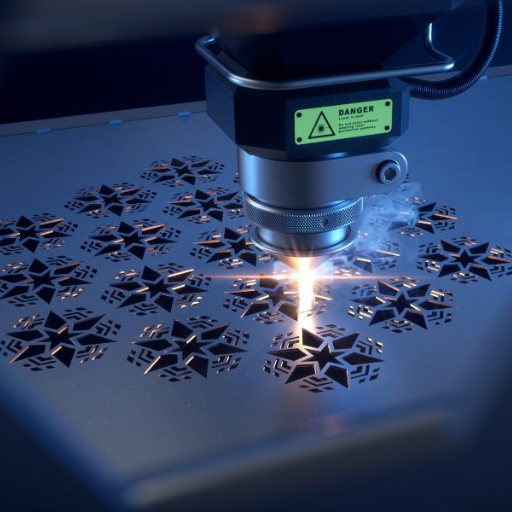
Due to the rapid development of laser cutting and waterjet cutting technologies, the services have transformed significantly. Automation has increased as well as integration with computer-aided design (CAD) systems thus making precision even higher and efficiency better. This is because modern laser cutters have improved in terms of beam control with faster processing speeds. Consequently, these developments are beneficial since there can be more complicated designs that are produced at a shorter period of time while dealing with such machinery like that one mentioned above. In other words, waterjet cutting has made it possible to cut through different materials without any burrs or distortion by changing pressure conditions and coming up with new nozzles designs respectively. At the same time, both technologies have been used across industries due to reduction in cost of machines in addition to their easier interaction models for users. Thus, this kind has seen an improvement earned from using such advanced tools plus production became faster boosting quality which is better than before besides providing affordable solutions for various applications in comparison to earlier cases thereof.
The Role of Modern Cutting Machines
Different industries have their production capabilities improved by modern cutting machines. No other benefits match its precision, efficiency and adaptability in meeting the manufacturing as well as fabrication sectors’ high demands of today. Complex designs are made possible by laser cutting machines through advanced beam control systems and high processing speeds that minimize chances of errors occurring. Alternatively, waterjet cutters can cut through a variety of materials with no heat damage because of enhanced pressure systems and abrasives. Together with this development, integration of computer-aided design (CAD) systems into cutting machine facilitates automation thereby reducing both time and money spent on production processes. Thus, it is expected that the latest generation of these equipment will bring forth an additional improvement in terms of accuracy speed and low-cost which eventually will change the content of cutting services once again over time due to continuous technology advancement.
The Rise of Precision Cutting Services
They have experienced massive expansion due to the rising requirement for precise cuts of high quality in different sectors. The leading firms in this industry have exploited technological advancements through employment of cutting-edge laser and waterjet machines that deliver outstanding accuracy levels. These services are essential in industries such as aerospace and medical devices where thoroughness is imperative; hence, exactitude is paramount. Moreover, these laser cutting methods are now intermingled with computer aided design (CAD) software which makes sure that there’s no wastage but replication of designs gets right to the point increasing productivity instead . This has led to a situation whereby they cannot be done without offering solutions that can be scaled up to match increasingly intricate needs of modern production and manufacturing quite accurately.
What Industries Benefit Most from Laser and Waterjet Cutting?

Aerospace, automotive and manufacturing of medical devices are examples of the industries that majorly benefit from laser and waterjet cutting. In aerospace, the precision as well as capability to handle materials that are tough is essential in creating components that fall within strict safety and performance standards. The automotive industry uses these cutting technologies to manufacture intricate parts with high accuracy ensuring consistency and reducing material waste. Similarly, the medical device industry heavily relies on laser and waterjet cutting precision to make small intricate parts needed for advanced medical tools and implants. Additionally, electronics architecture, custom fabrication among other sectors also derive considerable value from the usefulness of these cutting technologies in offering versatility as well as precision.
Manufacturing and Fabrication
Manufacturing and fabrication cover a wide range of processes that help in converting raw materials into finished products. Among other purposes, lasing and water jet cutting are essential because of their versatility as well as accuracy. A technique which involves high speed processing, laser cutting can work with different kinds of material from plastics to metals within close tolerances. It is highly effective when it comes to shaping complex objects as well as delicate structures. Contrarily, waterjet cutting is good for heavy cuts through dense materials and requires no heating and hence does not cause heat affected zones on the product during the process. It is used to cut metals, stones, glasses, etcetera without modifying their original properties. By combining these two technologies, production time is shortened, accuracy improved while minimizing scrap generation thus making manufacturing and fabrication more productive at a reduced cost.
Aerospace and Automotive
To be precise and efficient, the aerospace and automobile industries have to incorporate laser and waterjet cutting. Laser cutting enables fabrication of intricate components and structural parts at minimal material wastage rate due to its precision as well as speed. Aerospace industry in particular needs these because that is where they are required to meet very tight tolerances and high quality standards. Additionally, it facilitates water jet cutting which can cut thicker materials without heat warping, thus preserving critical part’s integrity. In the same vein, both methods can help develop light but strong parts essential for improving fuel efficiency as well as increasing performance in automotive fields of application concerned with aviation. This way, these techniques assist in coming up with innovative designs, lowering costs of production while improving overall performances in highly competitive areas like this one we are considering here.
Medical Device Manufacturing
Laser and waterjet cutting are pivotal in the manufacturing of medical devices as it requires precision and reliability. Laser cutting, which is used to produce intricate and delicate medical components provides high levels of accuracy with required tolerances for surgical instruments, implants, and diagnostic devices. On the other hand, waterjet cutting has versatility as well as a wide range of materials that can be cut without warping making it ideal for processing medical-grade metals, plastics, composites among others that are commonly used in device manufacturing. The non-thermal nature of waterjet machining ensures that material properties are not altered thus conserving biocompatibility and structural integrity of the medical appliances. These technologies simplify production activities by reducing lead times while complying with demanding quality restrictions prevalent within the healthcare sector consequently enabling development of inventive life-saving drugs.
Frequently Asked Questions (FAQs)
Q: What is the synergy of Laser Waterjet Technologies?
A: The synergy of Laser Waterjet Technologies combines the precision of a fiber laser with the versatility of water jet cutting. This hybrid approach significantly enhances the ability to cut a variety of materials with high speed and precision, improving efficiency and results in metal fabrication and other industries.
Q: How does a water jet guided laser work in metal cutting?
A: A water jet guided laser leverages a guided laser beam alongside a high-pressure water jet. The water jet helps to cool the material and reduce slag, allowing for cleaner and more precise cuts on metals and other materials. This technology is particularly beneficial for complex metal cutting tasks.
Q: What are the benefits of using fiber lasers in metal cutting?
A: Fiber lasers offer several advantages in metal cutting, including higher efficiency, greater speed, and the ability to cut reflective materials like aluminum and copper. They also have a longer service life compared to other types of lasers, making them ideal for various metal fabrication projects.
Q: How does tube laser technology enhance precision in metal cutting?
A: Tube laser technology enhances precision by using a highly focused laser beam to cut through tubular metal structures with exceptional accuracy. This is particularly useful in industries requiring detailed metal structures or where tube profiles play a crucial role in the final product’s specification.
Q: Are laser cutting services appropriate for small prototype production?
A: Yes, laser cutting services are highly suitable for small prototype production. The precision and flexibility of fiber laser and water jet technologies allow for the accurate realization of complex designs and specifications in prototypes, providing valuable insights for next project development stages.
Q: What materials can be cut using water jet guided laser technology?
A: Water jet guided laser technology can be used to cut a variety of materials, including ceramics, sheet metal, nickel, and carbon steel. This versatility makes it an excellent choice for diverse applications across different sectors.
Q: What kind of maintenance does a waterjet cutting machine require?
A: Maintenance for a waterjet cutting machine includes regular inspection and cleaning of the nozzle, ensuring the water treatment system is functioning correctly, and monitoring the high-pressure components. Proper maintenance ensures consistent performance and prolongs the machine’s operational life.
Q: How does the process of metal cutting differ between plasma and laser technologies?
A: Plasma cutting uses an electrically conductive gas to transfer energy from a power supply to any conductive material, causing cuts that often require post-processing to remove slag. In contrast, laser cutting, particularly with fiber lasers, offers higher precision cuts with minimal slag, better suited for intricate designs and detailed metalwork.
Q: What safety measures are important when using laser and water jet cutting systems?
A: Safety measures include ensuring an efficient ventilation system to manage fumes, wearing proper protective equipment, and adhering to operational guidelines. Additionally, regular training on machine handling and understanding the potential risks can help maintain a safe working environment.
Q: What role does Synova play in guided laser technology?
A: Synova is a pioneer in the development of water jet guided laser technologies. Their innovative solutions enhance the precision and efficiency of laser cutting services, making complex metal fabrication and other cutting tasks more accessible and high-quality.






